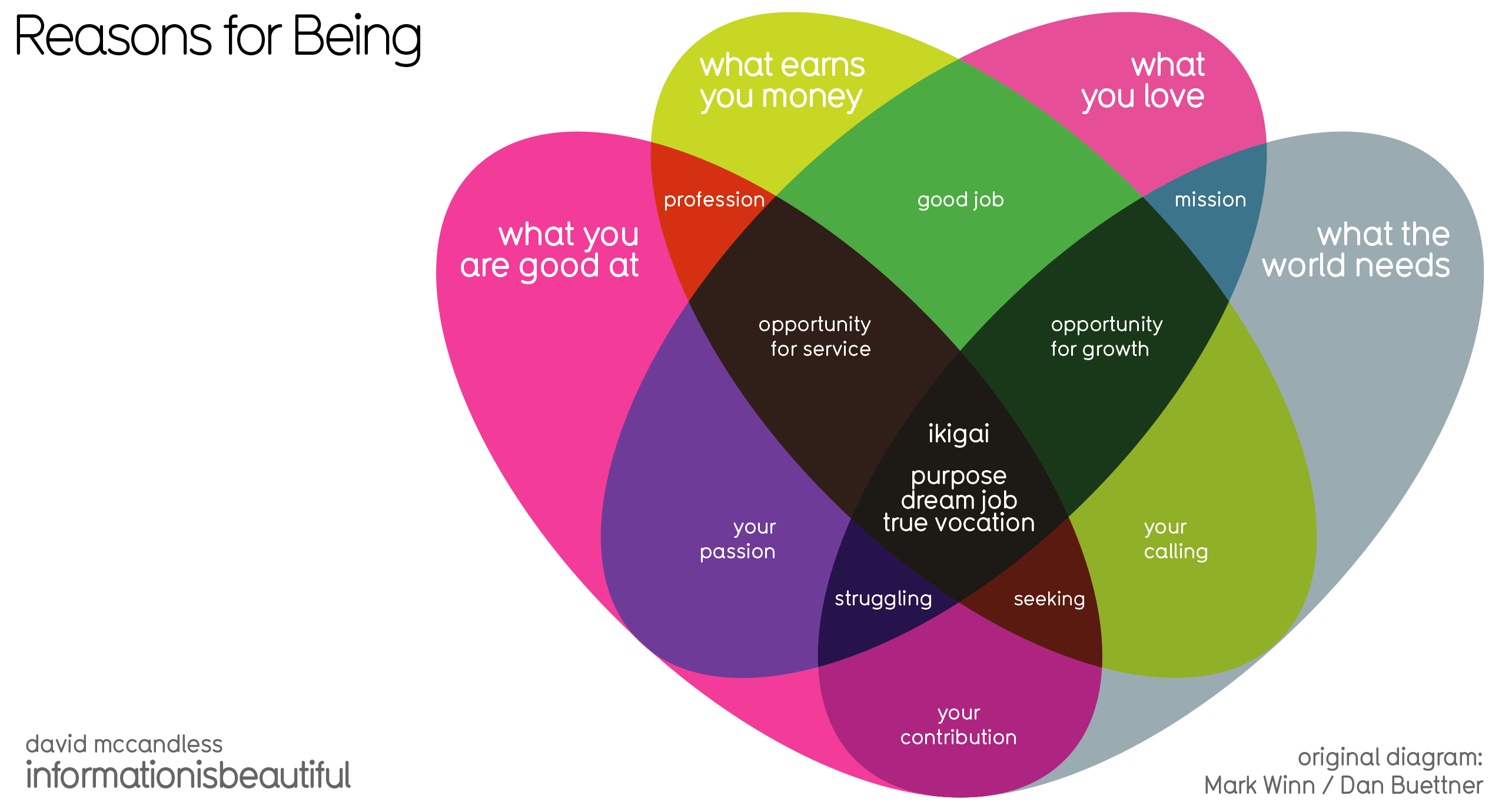Japanese Key to Living Longer, Healthier
What is your purpose today? Tomorrow? This month? This year? In life?
These can be tough questions to ask ourselves because they’re even more difficult to answer. But, what if we could answer them more easily, readily? And, with these answers, we could take regular action that would produce greater emotional well-being?
To get there, I believe you need to understand ikigai (pronounced “ee-kee-g-eye”). It stems from two Japanese words: iki (life) plus gai (purpose). However, it is about what you do, not so much about navel-gazing about why you are Earth.
In honor of Emotional Wellness Month, I believe that by understanding ikigai’s roots–and what it is–the Western world can learn from this ancient Japanese principle and gain greater emotional well-being, happiness and productivity along the journey.
Origins of Ikigai
In 2008, Dan Buettner, a National Geographic Fellow and New York Times-bestselling author, published his book, The Blue Zones: Lessons for Living Longer From the People Who’ve Lived the Longest. Thanks to the marketing success of The Blue Zones, we all got a glimpse into the world’s five identified “blue zones,” where the longest-lived people exist and thrive, and why they do.
The five blue zones on Earth are:
- Sardinia (Italy)
- Ikaria (Greece)
- Loma Linda, California
- Nicoya Peninsula (Costa Rica)
And…
- Holding the title of “most centegenerians on the planet,” most women over the age of 100, and the birthplace of karate is Okinawa, Japan.
And, Buettner argues, among others, that ikigai is one of the primary reasons for Okinawans’ remarkable longevity and emotional well-being.
Throughout the cultural development of Okinawa, during the Heian period (794 to 1185 CE) the word ikigai came into being. This is likely when the components of the ancient well-being framework starts to metamorphose from individual habits and mores of the few, to the cultural norms they are today. And, when Buettner introduced the West to it, thankfully, the notion of its power has begun to spread. Let’s continue on to learn about what these components of ikigai are.
What is Ikigai?
According to the Japanese, every person has ikigai. The noble human purpose is to find and keep finding your reason to get up in the morning. This is your ikigai.
In Awakening Your Ikigai: How the Japanese Wake Up to Joy and Purpose Every Day (2018), Japanese neuroscientist, author and radio host Ken Mogi, PhD, unpacks ikigai for the everyday person. In Japan, ikigai is well-known and everyone knows the term, even if they cannot define it equally.
Mogi’s book introduces the five pillars he believes will help you take each day to the next level:
- starting small → focus on the details
- releasing yourself → accept who you are
- harmony and sustainability → rely on others
- the joy of little things → appreciate sensory pleasure
- being in the here and now → find your flow.
Another book on the topic is Ikigai: The Japanese Secret to a Long and Happy Life (2017) by Héctor García and Francesc Miralles. In it, the authors explain its ten activities:
- Keep moving throughout the day.
- Take it slow. Quality over quantity.
- Eat less than your stomach demands. (The Japanese use the phrase, hara hachi bu, before meals.)
- Surround yourself with friends.
- Stay fit.
- Smile.
- Reconnect with nature.
- Give thanks. Show and feel gratitude.
- Live in the moment.
- Follow your ikigai.
Each of these components, wrapping Mogi and García and Miralles’ lists together, you get a whole picture of the elements that encompass ikigai. But, how do you find yours?
How to Add Ikigai to Your Life
As Tim Tamashiro notes in his lighthearted TEDxYYC talk, “How to Ikigai,” you can start your process with adding ikigai to your life, by starting “part-time.” That is, if you work a nine-to-five job, then you can add ikigai from five to nine o’clock in the morning and evening (the “five-to-nines”). Both periods are your time and allow you to build your life purpose.
Ikigai is often represented with one of two Venn diagrams; above is the lotus version by David McCandless and is the most comprehensive roadmap to finding it that I’ve seen. To find yours, essentially, you ask yourself four questions:
- What are you good at?
- What does the world need?
- What do you love?
- What earns you money?
As you branch through these various questions and answers, you find your ikigai. Remember, it changes as you live your life. So, while you may have one now, you may have another later on down the road.
As Tamashiro further explains, you can start a “side hustle” (money-earning endeavor; nothing wrong with making money!), or you can seek a higher well-being through a “side helpful” (giving back to your community, or the world in some way). As Dr. Laurie Santos of Yale University has studied and taught in her popular The Science of Well-Being course (which you can take for free on Coursera), there are four activities/factors for people to consider when choosing something like a “side helpful”: kindness, meditation, time affluence (how much time you have to use the way you want to), and spending time with friends and family. Look at your life and think about how you can add one of the activities, or increase your time affluence in the five-to-nines.
—
Ikigai is a powerful paradigm for greater emotional well-being in our Western world focused on short-term fixes, money, and selfies. If we can slow down, embrace the searching journey in our lives, and continually improve our reason for getting up in the morning, we can all enjoy longevity and a bit more happiness.
Care to share: What is your ikigai?
